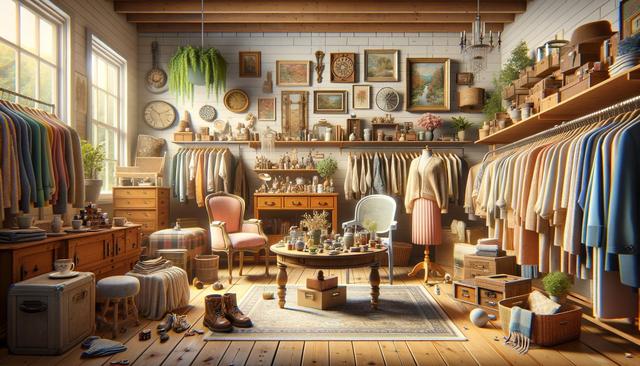The Appeal of Thrift Stores
Thrift stores offer a treasure trove of items that combine affordability, uniqueness, and sustainability. Whether you’re on the hunt for vintage fashion, home goods, or rare books, thrift shopping provides a rewarding alternative to conventional retail. One of the primary reasons people are drawn to secondhand stores is the opportunity to find items with character and history. Unlike mass-produced goods, thrifted pieces often come with stories, showcasing designs and craftsmanship not commonly seen today.
Moreover, thrift shopping contributes to a circular economy, reducing waste and supporting charitable organizations in the process. Many thrift stores operate as non-profits, meaning your purchases often support local communities or important causes. This makes thrifting not just a smart financial decision, but also a socially responsible one.
How To Find Vintage Clothing Deals
Scoring a great deal on vintage clothing requires a mix of strategy and patience. First, familiarize yourself with the brands and styles from different eras so you can quickly identify items worth your time. Vintage tags and construction methods, such as metal zippers or hand-sewn seams, can help you date a garment and assess its quality.
Here are a few tips to help you find vintage treasures:
- Visit stores regularly, as new items are added often.
- Shop in neighborhoods with older populations, where vintage donations are more common.
- Check out estate sales and flea markets as well—they often have hidden gems.
- Don’t overlook less popular sizes or sections, as you might find an overlooked item.
Understanding your personal style and wardrobe needs will also help you avoid buying items you won’t actually wear. With practice, your eye for standout vintage pieces will sharpen, making your thrift trips more successful over time.
Tips For Buying Secondhand Furniture
Thrift stores can be goldmines for affordable, high-quality furniture, but it’s essential to shop smart. Solid wood pieces, for example, are often found at a fraction of the cost of new furniture and can last for decades with a little care. Before purchasing, inspect items for structural integrity—check joints, legs, and drawers to ensure everything is secure and functional.
Keep these tips in mind when shopping for secondhand furniture:
- Bring a measuring tape to ensure the piece will fit your space.
- Look past surface damage like scratches or worn paint—these can often be fixed easily.
- Smell the furniture. Avoid items with strong odors that may indicate mold or mildew.
- Ask about delivery options if the item is too large to transport yourself.
With a bit of creativity and effort, you can transform secondhand furniture into stylish, functional pieces that suit your home perfectly.
Online Thrift Shopping Guide
Thrifting has evolved beyond brick-and-mortar stores. Today, online thrift shopping offers convenience and access to a broader selection of items. From curated vintage boutiques to peer-to-peer resale platforms, there are numerous ways to thrift from your home. However, shopping secondhand online comes with its own set of considerations.
To make the most of your online thrift experience:
- Read product descriptions carefully, noting condition and sizing details.
- Check return policies before purchasing, especially for clothing and shoes.
- Use filters to narrow down your search and avoid feeling overwhelmed.
- Follow sellers with positive reviews and clear photos of their items.
The convenience of online thrift shopping is unmatched, especially for those seeking specific brands or styles. Whether you’re looking for vintage clothing, unique home decor, or collectibles, online platforms expand your reach and can help you build a more sustainable wardrobe or home environment.
Sustainable Fashion Choices
Thrift stores play a crucial role in promoting sustainable fashion choices. By buying secondhand, consumers reduce demand for new clothing production, which is resource-intensive and often harmful to the environment. Clothing production involves significant water usage, chemical dyes, and emissions, making it one of the more polluting industries globally.
Choosing thrifted clothing helps mitigate these impacts and supports a more ethical fashion cycle. Here’s how thrifting aligns with sustainability:
- Extends the lifecycle of garments, keeping them out of landfills.
- Reduces the environmental footprint associated with manufacturing and shipping new clothing.
- Encourages mindful consumption and a shift away from fast fashion.
- Supports community-based businesses and organizations.
Incorporating secondhand items into your wardrobe isn’t just environmentally friendly—it’s also an opportunity to express your individuality. Vintage and thrifted clothing often feature unique cuts, fabrics, and patterns that stand out from modern fashion trends.




Leave a Reply